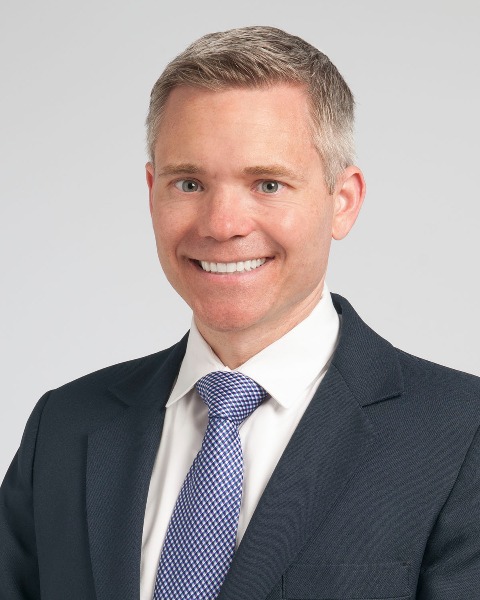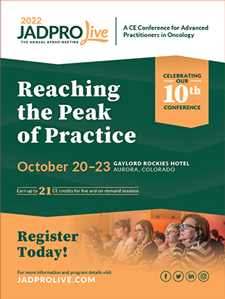Back


Clinical Posters
JL1003C: An Advanced Practice Provider–Run Lymphadenopathy Clinic: The Cleveland Clinic Experience
Saturday, October 22, 2022
10:00 AM – 11:00 AM ET

Has Audio

Christopher D'Andrea, PA-C
Physician Assistant
The Cleveland Clinic Foundation
Cleveland, Ohio, United States
Poster Presenter(s)
BACKGROUND
Lymphadenopathy is a specific sign/symptom with variable clinical presentation including patient self-exam, provider exam or incidental finding on imaging studies. When identified, the management and use of biopsy for evaluation can also be highly variable given the associated history and extensive differential diagnosis associated with lymphadenopathy. For this reason, in 2017 we at The Cleveland Clinic established an Advanced Practice Provider (APP) staffed lymphadenopathy clinic to specifically evaluate and manage these patients.
METHODS
We prospectively followed patients referred to our clinic for lymphadenopathy from August 2017 through February 2022. A total of 151 patients were referred during that time. Patients were assessed for how the lymphadenopathy was discovered (e.g., exam, imaging), rate of biopsy referral, and diagnostic outcome following biopsy.
RESULTS
Of the 151 patients referred, the median age was 51.2 years (range 18-89) with 54% male and 46% female. Lymphadenopathy was most commonly discovered when patients underwent imaging for acute symptom assessment (45%), compared to those where lymphadenopathy was initially found on either self or provider exam (32%) or incidentally identified on imaging performed for other reasons (23%). A total of 62 patients (41%) were referred for a tissue assessment (lymph node biopsy n = 48, bone marrow biopsy n = 9, peripheral blood flow cytometry n = 3, skin biopsy n =1, unknown n = 1) after the initial consultation of whom 38 (61%) were found to have a malignant diagnosis representing 25% of the 151 total patients referred to our lymphadenopathy clinic. The most common non-malignant diagnoses among patients referred for tissue assessment was a negative/reactive/benign process (12 of 24, 50%) followed by follicular hyperplasia (3 of 24, 12.5%) and non-caseating granuloma/sarcoidosis (3 of 24, 12.5%). The most common malignant diagnoses were lymphoma (89.5% of all malignancies) with follicular lymphoma, grade 1-2 occurring most frequently (11 of 38 newly diagnosed malignancies, 29%).
CONCLUSION
Our lymphadenopathy clinic provides a valuable referral service for the management of lymphadenopathy of unknown cause. Based on our sampled patient population, 1 in 4 patients referred were found to have a newly diagnosed malignancy. High volume referral centers may consider opening a similar APP-run clinic to systematically evaluate this group of high risk patients.
Lymphadenopathy is a specific sign/symptom with variable clinical presentation including patient self-exam, provider exam or incidental finding on imaging studies. When identified, the management and use of biopsy for evaluation can also be highly variable given the associated history and extensive differential diagnosis associated with lymphadenopathy. For this reason, in 2017 we at The Cleveland Clinic established an Advanced Practice Provider (APP) staffed lymphadenopathy clinic to specifically evaluate and manage these patients.
METHODS
We prospectively followed patients referred to our clinic for lymphadenopathy from August 2017 through February 2022. A total of 151 patients were referred during that time. Patients were assessed for how the lymphadenopathy was discovered (e.g., exam, imaging), rate of biopsy referral, and diagnostic outcome following biopsy.
RESULTS
Of the 151 patients referred, the median age was 51.2 years (range 18-89) with 54% male and 46% female. Lymphadenopathy was most commonly discovered when patients underwent imaging for acute symptom assessment (45%), compared to those where lymphadenopathy was initially found on either self or provider exam (32%) or incidentally identified on imaging performed for other reasons (23%). A total of 62 patients (41%) were referred for a tissue assessment (lymph node biopsy n = 48, bone marrow biopsy n = 9, peripheral blood flow cytometry n = 3, skin biopsy n =1, unknown n = 1) after the initial consultation of whom 38 (61%) were found to have a malignant diagnosis representing 25% of the 151 total patients referred to our lymphadenopathy clinic. The most common non-malignant diagnoses among patients referred for tissue assessment was a negative/reactive/benign process (12 of 24, 50%) followed by follicular hyperplasia (3 of 24, 12.5%) and non-caseating granuloma/sarcoidosis (3 of 24, 12.5%). The most common malignant diagnoses were lymphoma (89.5% of all malignancies) with follicular lymphoma, grade 1-2 occurring most frequently (11 of 38 newly diagnosed malignancies, 29%).
CONCLUSION
Our lymphadenopathy clinic provides a valuable referral service for the management of lymphadenopathy of unknown cause. Based on our sampled patient population, 1 in 4 patients referred were found to have a newly diagnosed malignancy. High volume referral centers may consider opening a similar APP-run clinic to systematically evaluate this group of high risk patients.

